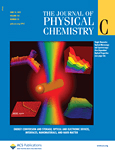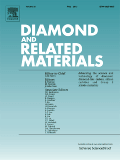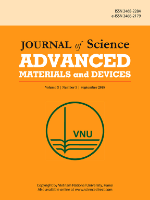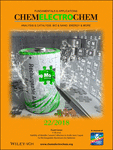
C-Journal of Carbon Research
Scope & Guideline
Leading the Charge in Carbon Innovations and Environmental Solutions
Introduction
Aims and Scopes
- Carbon Nanomaterials and Their Applications:
The journal covers a wide array of carbon nanomaterials, including graphene, carbon nanotubes, and carbon dots, focusing on their synthesis, characterization, and diverse applications such as in energy storage, catalysis, and environmental remediation. - Carbon-Based Composite Materials:
Research on composite materials that incorporate carbon elements is a core focus. This includes studies on the mechanical and electrochemical properties of these composites, particularly in the context of supercapacitors and batteries. - Environmental Applications of Carbon Materials:
The journal emphasizes the use of carbon materials for environmental purposes, including carbon capture, pollutant removal, and biochar applications in soil enhancement and wastewater treatment. - Innovative Synthesis and Characterization Techniques:
Papers often discuss novel methods for the synthesis and characterization of carbon materials, highlighting advancements in techniques such as chemical vapor deposition, hydrothermal synthesis, and plasma treatments. - Theoretical and Computational Studies:
The journal features theoretical studies that utilize computational methods to explore the properties of carbon materials. This includes density functional theory (DFT) analyses and simulations to predict material behavior and optimize their properties.
Trending and Emerging
- Sustainable Carbon Sources and Waste Valorization:
There is a growing trend towards utilizing renewable resources and waste materials for carbon production. Research is increasingly focusing on biomass-derived carbons and the valorization of agricultural and industrial waste. - Advanced Energy Storage Solutions:
The development of carbon-based materials for advanced energy storage systems, such as supercapacitors and batteries, is gaining momentum. This includes research on improving the performance and sustainability of these energy storage devices. - Electrocatalysis and Energy Conversion:
Emerging studies emphasize the role of carbon materials in electrocatalysis for energy conversion processes, such as hydrogen evolution and CO2 reduction, showcasing the potential of carbon materials in addressing energy challenges. - Carbon-Based Sensors and Biomedical Applications:
The use of carbon nanomaterials in sensor technology and biomedical applications is trending. This includes research on biosensors, drug delivery systems, and therapeutic applications of carbon-based materials. - Integration of Machine Learning in Carbon Research:
The incorporation of machine learning and artificial intelligence in the design and optimization of carbon materials is becoming increasingly prevalent, indicating a shift towards data-driven approaches in research.
Declining or Waning
- Traditional Fossil Fuel-Based Carbon Materials:
Research focused on carbon materials derived from traditional fossil fuels is becoming less prominent, as the field shifts towards more sustainable and innovative carbon sources, such as biomass and waste materials. - Basic Characterization of Carbon Materials:
There is a noticeable reduction in studies solely focused on basic characterization of carbon materials without application context. The emphasis is now on applied research that connects the properties of carbon materials to specific technological applications. - Single-Use Applications of Carbon Materials:
Research on carbon materials used for single-use applications is declining, as the focus shifts towards sustainability and the development of reusable or multifunctional carbon-based materials. - General Reviews without Novel Insights:
The journal has seen fewer general reviews that do not offer novel insights or advancements in the field. The trend is moving towards more targeted reviews that address specific challenges or innovations in carbon research.
Similar Journals

Journal of Physical Chemistry C
Elevating understanding in the realm of physical chemistry.The Journal of Physical Chemistry C, published by the American Chemical Society, stands as a pivotal resource in the realm of materials science and physical chemistry. With an impact factor reflecting its esteemed reputation, this journal showcases high-quality research spanning topics such as electronic, optical, and magnetic materials, as well as nanoscience and nanotechnology. Hailing from the United States, it operates without an open access model, yet its contributions are critical for advancing our understanding of surfaces, coatings, and films. Notably, the journal is classified in Quartile 1 (Q1) for several categories, underscoring its prominence in Physical and Theoretical Chemistry and related fields. Researchers, professionals, and students alike will find value in the comprehensive discussions and innovative research trends presented. The scholarly articles published from 2007 to 2024 not only drive forward scientific inquiry but also inform practical applications in various industries, making this journal an essential tool for anyone committed to excellence in the sciences.

Biochar
Exploring the Future of Environmental Solutions with BiocharWelcome to Biochar, an esteemed academic journal dedicated to the exploration and advancement of biochar technology and its applications across multiple fields. Published by SPRINGER SINGAPORE PTE LTD, this journal serves as a vital platform for disseminating high-quality research that addresses the critical intersection of environmental science, soil health, and sustainable materials development. With a commendable Q1 ranking in the fields of Biomaterials, Environmental Science, Pollution, and Soil Science, Biochar is recognized for its significant impact, as evidenced by its placement in the upper percentiles across various Scopus rankings. Researchers and professionals in agricultural and biological sciences will find valuable insights and innovative methodologies that promote sustainable practices and enhance soil quality. This journal, operating from its base in Germany, is committed to fostering a collaborative environment where cutting-edge research can inform policy and practice. Engage with us as we strive to advance the science of biochar from 2019 to 2024 and beyond.

Carbon Trends
Advancing the Future of Carbon ResearchCarbon Trends is a cutting-edge, openly accessible journal published by ELSEVIER, dedicated to advancing research and discussion in the domains of Chemistry, Materials Chemistry, and Materials Science. Established in 2020, this journal has quickly become a pivotal platform for scientists and researchers to share innovative findings related to carbon materials and their applications. With a solid impact factor and a ranking in the second quartile (Q2) across multiple subject categories, including a percentile standing in the top two-thirds of global publications, Carbon Trends plays an essential role in shaping the future of materials science. The journal’s open access model ensures that valuable research is accessible to a broad audience, facilitating collaboration and knowledge dissemination. Researchers, professionals, and students alike will benefit from the insights and trends published within its pages, guiding them in the rapidly evolving field of carbon sciences.

International Journal of Electrochemical Science
Unveiling cutting-edge electrochemical techniques and applications.International Journal of Electrochemical Science is a peer-reviewed journal dedicated to disseminating cutting-edge research in the field of electrochemistry. Published by Elsevier in Serbia, this journal serves as a vital platform for scientists and researchers to explore innovative electrochemical techniques, processes, and applications. With an ISSN of 1452-3981, it has been a respected source of scholarly articles since its inception in 2006 and continues to bridge the gap between theoretical advancements and practical implementations up until 2024. Notably, it holds a Q4 quartile ranking in the field of electrochemistry and ranks 41 out of 60 in the Scopus database, situating it within the 32nd percentile among its peers. The journal champions open academic discourse, contributing significantly to the advancement of knowledge in electrochemical sciences, making it an essential resource for researchers, professionals, and students alike who are striving towards new discoveries and innovations.

DIAMOND AND RELATED MATERIALS
Fostering innovation in diamond and related materials.DIAMOND AND RELATED MATERIALS, published by Elsevier Science SA, serves as a premier international platform for the dissemination of high-quality research in the fields of materials science, electrical engineering, and chemistry, with a specialized focus on diamond and its related materials. With an ISSN of 0925-9635 and an E-ISSN of 1879-0062, this journal has established itself within the top quartiles, reflecting its influential contribution to the scientific community, particularly in the categories of Chemistry (miscellaneous) and Electrical Engineering, among others. The journal's wide scope encompasses both theoretical and applied aspects of diamond research, making it an essential resource for professionals and academics alike. The current rankings position it favorably within its respective disciplines, with a notable 79th percentile in General Physics and Astronomy and strong standings in related categories. Although it does not offer open access, researchers can stay informed of cutting-edge advancements and methodologies through its comprehensive articles and reviews, enriching the wider discourse in advanced materials research.

Energy & Environmental Materials
Transforming Research into Real-World ImpactEnergy & Environmental Materials, published by WILEY, is an esteemed academic journal dedicated to pioneering research in the multifaceted domains of energy, environmental science, and materials science. Since its inception in 2018, this journal has rapidly established itself as a leading platform, holding a prestigious Q1 ranking across multiple categories including Renewable Energy, Sustainability, and Waste Management, reflecting its significant contributions to advancing knowledge in these critical areas. With a robust Scopus ranking that positions it in the top percentile for Environmental Science and Materials Science, it caters to a diverse audience of researchers, professionals, and students seeking cutting-edge findings and practical applications in energy efficiency and sustainable materials. This open-access journal facilitates the dissemination of innovative research and aims to bridge the gap between scientific exploration and real-world solutions for a sustainable future. The editorial team encourages submissions that explore both theoretical and practical aspects, ensuring that every publication not only contributes to the academic landscape but also drives impactful change in energy and environmental practices.

Journal of Science-Advanced Materials and Devices
Unleashing Potential: Where Science Meets InnovationJournal of Science-Advanced Materials and Devices is a leading open-access journal published by Vietnam National University, dedicated to advancing the field of materials science through cutting-edge research and innovative developments. Since its inception in 2016, this journal has become a pivotal platform for sharing insights and discoveries in various subfields, including biomaterials, ceramics and composites, and electronic, optical, and magnetic materials. With impressive quartile rankings, including Q1 across multiple categories in 2023, and a notable Scopus ranking placing it in the top 15th percentile for ceramics and composites, it highlights the journal’s influence and prestige within the global academic community. Open Access since its launch, the journal aims to facilitate unrestricted dissemination of scholarly work, empowering researchers, professionals, and students to engage with the latest advancements. The Journal of Science-Advanced Materials and Devices is vital for those seeking high-quality contributions that influence both theoretical understanding and practical applications in the ever-evolving landscape of materials science.

Carbon Capture Science & Technology
Leading the Charge: Advancing Sustainable Solutions through Carbon CaptureCarbon Capture Science & Technology, published by Elsevier, is an esteemed, peer-reviewed, open access journal dedicated to advancing research in the growing fields of chemical engineering, energy, and environmental science. With an ISSN of 2772-6568, this influential journal has established itself since its inception in 2021 and continues to make notable contributions, reflected in its impressive Q1 rankings across multiple categories, including a #14 rank in Environmental Science and a #13 rank in Chemical Engineering as of 2023. The journal aims to provide a platform for the dissemination of innovative carbon capture technologies and methodologies that address vital climate challenges, ensuring broad accessibility for researchers, professionals, and students alike. By embracing open access, Carbon Capture Science & Technology fosters a collaborative approach to knowledge sharing, making it an indispensable resource for those committed to sustainability and environmental preservation.

ChemElectroChem
Transforming ideas into impactful scientific discoveries.ChemElectroChem is a premier open-access journal published by WILEY-V C H VERLAG GMBH, focusing on the interdisciplinary fields of catalysis and electrochemistry. Established in 2014 and actively publishing until 2024, this journal boasts an impressive reputation, currently ranked in the Q2 category for both catalysis and electrochemistry according to the 2023 metrics. With an Scopus ranking placing it in the 74th percentile for Electrochemistry and 61st for Chemical Engineering and Catalysis, ChemElectroChem serves as an essential platform for researchers, professionals, and students dedicated to advancing knowledge and fostering innovation in these critical scientific domains. Since its transition to open access in 2023, the journal aims to maximize the dissemination of cutting-edge research and facilitate the exchange of ideas among global scholars, thereby enhancing the accessibility and impact of high-quality science within the community. For those engaged in the ever-evolving conversations around energy storage, conversion processes, and sustainable solutions, ChemElectroChem is an invaluable resource.

Tungsten
Fostering collaboration in the realm of tungsten innovation.Tungsten, published by SpringerNature, is a prestigious academic journal dedicated to advancing the field of materials science with a specific focus on tungsten and its diverse applications. Launched in 2019, the journal has quickly established itself as a leading resource in its domain, achieving a remarkable Q1 ranking across multiple categories including Materials Chemistry, Materials Science (miscellaneous), Metals and Alloys, and Surfaces, Coatings and Films. With robust performance reflected in its Scopus rankings—holding significant positions such as rank #20 in Metals and Alloys (88th percentile)—Tungsten serves as a vital platform for researchers and professionals seeking to disseminate innovative findings and foster collaboration in the materials science community. Although not an Open Access publication, this journal offers a well-curated collection of high-quality research articles, reviews, and technical notes aimed at driving forward the understanding and application of tungsten in various scientific sectors. Operating out of the United States, Tungsten is committed to providing an essential resource for academia and industry alike, making a significant contribution to the evolving landscape of materials research.